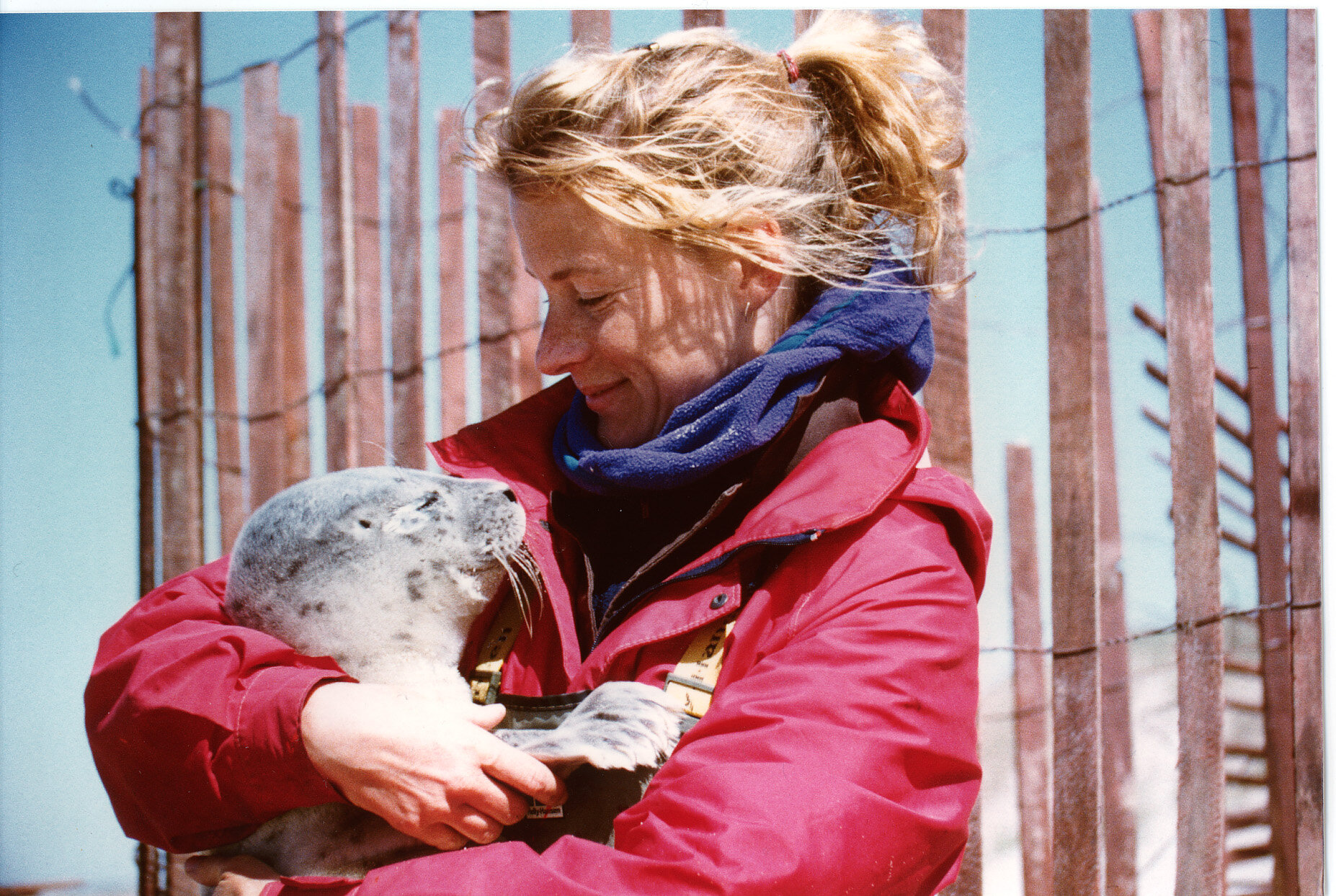Sara Iverson is the scientific director of the Ocean Tracking Network (OTN) and professor of biology at Dalhousie University.
Where did you grow up?
I grew up in Birmingham Michigan, a northern suburb of Detroit. But I identify most strongly with having spent all my summers on Lake Huron in the Les Cheneaux Islands in Michigan’s eastern Upper Peninsula – in fact, I still try to spend summers there in my cabin on one of the islands.
What is a typical day like in this job?
I wear many hats, being both the scientific director of OTN and also an active faculty member, running a lab and long-term research program. When I’m wearing my OTN hat I provide strategic leadership (where I can!) on scientific and academic activities and interact regularly with OTN staff, researchers, granting councils, and Dalhousie senior administration. When wearing my faculty hat my day can involve supervising graduate students, serving on various committees and advisory boards, in the lab analyzing samples and data and writing up results, or being outside in the field all day working with marine mammals and seabirds.
Sara working on establishing the Brazil node of OTN.
What do you enjoy most about your role as scientific director of OTN?
Seeing the incredible collaborations, growth and impact of OTN that has occurred since its birth as an idea, and the remarkable dedication and expertise of OTN staff and researchers. I also love seeing the amazing next generation of young OTN interdisciplinary scientists and leaders that have emerged from OTN’s training programs and having helped to make that happen.
How is your role with Apoqnmatulti’k different from other projects that you’ve been a part of?
Learning more from others than what I bring to the table! Through truly open dialogue, sharing, and partnership, I have learned and appreciated so much more about different ways of knowing and experiencing what we study in the ocean.
What does Apoqnmatulti’k mean to you?
It means sharing, respecting, learning, adapting, and enacting change for the better of our environment.
Sara with a harbour seal.
Why do you think animal tracking is important?
If we don’t know where animals are, when and where they move, and what habitats they need to survive and thrive in, especially in the face of changing environments, there is simply no way we can effectively manage our actions or enact conservation measures to protect species and their habitats.
What is something most people may not know about lobster or eel in the Bras d’Or lake or eel and tomcod in the Bay of Fundy?
I expect that most people think of the Bras d’Or Lake as a “lake” and may not know how important open-ocean species such as lobster and eel are to the Bras d’Or ecosystem and to the communities that occupy its coastal regions.
What is something new you learned while working on this project?
I think I have learned, in a much deeper way than I did previously, how wisely and respectfully the Mi’kmaq view peoples’ connection with and responsibility to the earth and waters on which we live and the creatures that inhabit them.
What are you most proud of with Apoqnmatulti’k?
The partnerships and trust we have built together throughout the project, the dedication of all to respecting and combining different knowledge systems, and the leadership role the students have taken in helping to make this happen.
What do you like to do outside of work?
I’m an avid sailor, swimmer, and runner. I enjoy gourmet cooking (and eating!), reading good mysteries, and just being in the outdoors.



